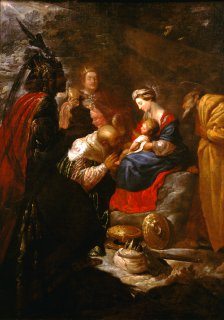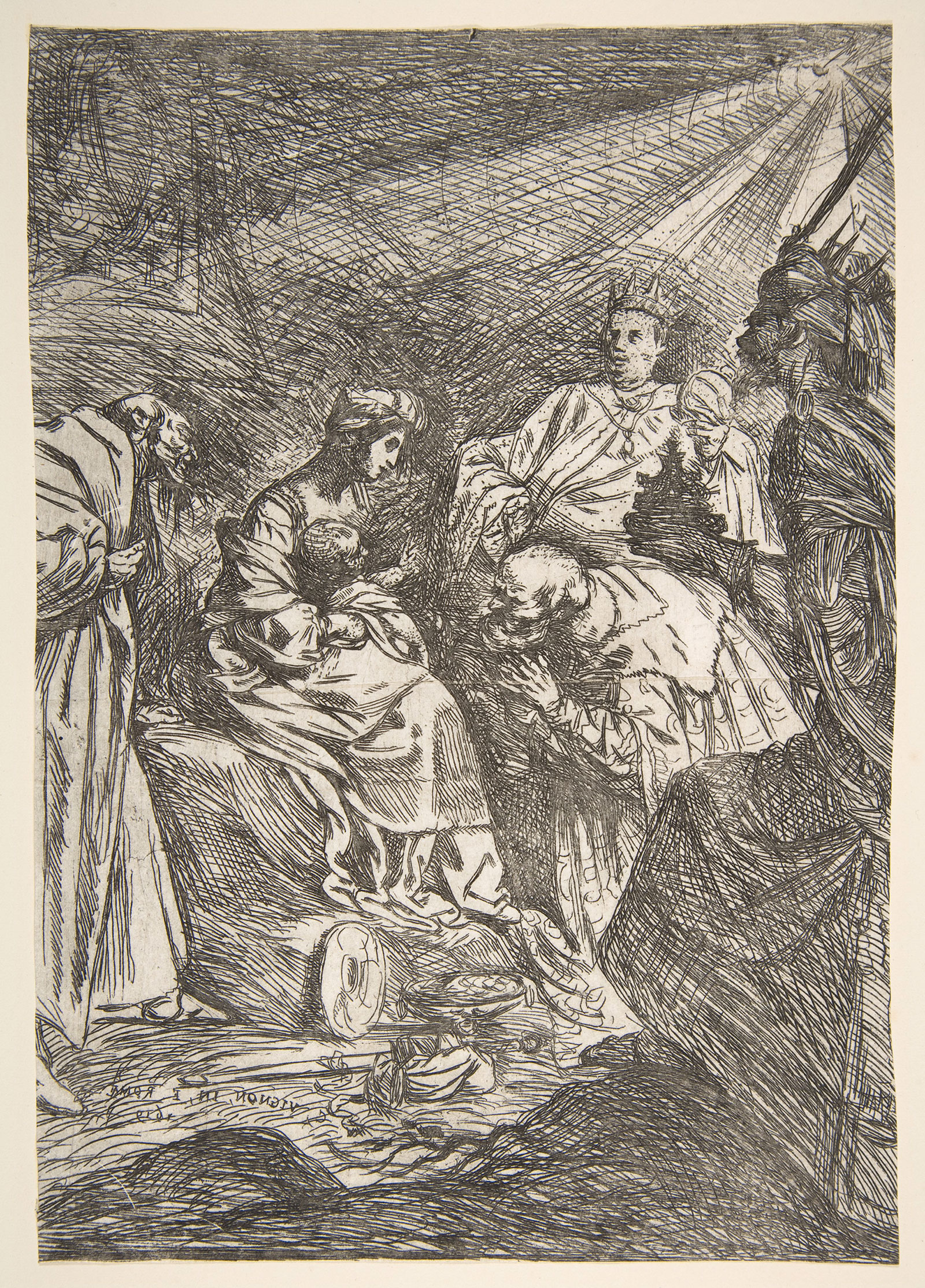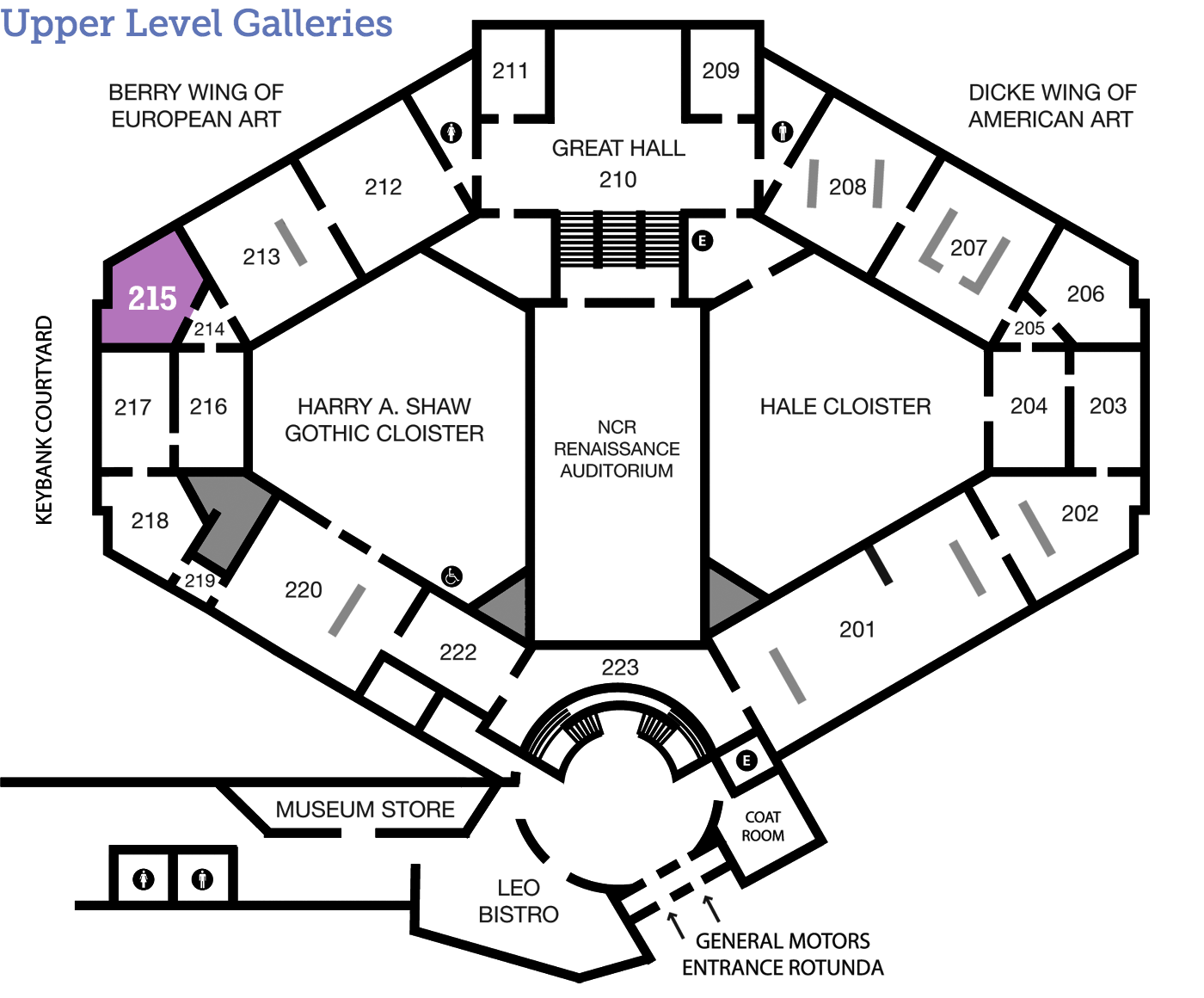
Claude Vignon
The Adoration of the Magi
(1593–1670)
French c. 1619 Oil on canvas 76 ½ x 54 ¼ inches Museum purchase in honor and memory of Miss Virginia V. Blakeney 1963.110
Knowns and Unknowns
You might recognize the figures in this scene, but the setting is more difficult to interpret. Recent discoveries have changed art historians’ understanding of this work–perhaps the information here will influence your interpretation of The Adoration of the Magi.
A Day in the Life
Tools and Techniques
Behind the Scenes
Who Done It?
The Adoration of the Magi at The DAI bears no signature and has no historical record. So how did art historians determine who painted it? They compared it to works of art that have known authors.
For many years scholars believed The Adoration was painted by Domenico Fetti (1589–1623) because of its close stylistic similarities to other works by this artist. However, in 1959 the then privately-owned painting was reintroduced to the market. Upon seeing it, the art historian Christopher Sterling quickly realized The Adoration had been incorrectly attributed. His proof? This nearly identical reverse etching, which had surfaced in 1934 and bears Vignon’s signature.

Claude Vignon, The Adoration of The Magi, 1619, etching in reverse, sheet: 9 7/16 x 6 9/16 inches. The Metropolitan Museum of Art, New York, Purchase, Joseph Pulitzer Bequest, 1917, 17.50.15-45, (artwork in the public domain; photograph provided by The Metropolitan Museum of Art, www.metmuseum.org).
Look Closer
Just for Kids
Signs & Symbols
Dig Deeper
Common Grounds
Vignon seems to have left the setting of this painting intentionally ambiguous. Since the 3rd and 4th centuries CE, however, artists have placed scenes of Christ’s birth and the Adoration of the Magi in a variety of locations. Click on the options below to learn about some of these places, and evaluate whether Vignon’s painting more strongly fits with any setting(s) in particular.
Turgurium
The earliest renderings of the nativity and related scenes from Christ’s birth often place the figures in a tugurium, a simple shelter composed of four posts and a roof.
Stable
Perhaps the most familiar to Western audiences today, this depiction is based on the description of the birth of Christ in the Gospel of Luke, and serves to highlight Christ’s humble beginnings.
Cave
Showing the Holy Family and their visitors in a cave is still a popular tradition in Eastern Orthodox art, and was common in Italy until the 14th century. It is based on the Protoevangelium of James, a gospel that was never officially included in the Bible. Sometimes they are shown inside a stable that is within a cave, a popular kind of building in historical Palestine.
Field/Meadow
This location also comes from Early Christian tradition. One of the earliest known depictions of the birth of Christ, found on a 4th century sarcophagus from Milan, places the event in a field.
Ruins
From the 15th century onwards, sometimes artists took to portraying the shepherds, magi, and Holy Family in Roman ruins or crumbling temples to represent the fall of Roman paganism and the supersession of the Jewish religion.
Arts Intersected
Illustrating a Holy Text
One of the most important stories in the Bible is the birth of Jesus, who Christians consider the Son of God. Just after Jesus’ birth a group of “wise men”—or magi—followed a star to Bethlehem to visit him, as described in the excerpt below. The Adoration of the Magi illustrates this scene, showing Mary, Jesus, and Mary’s husband Joseph, illuminated by starlight, receiving three men who present gifts to the newborn child.
“When they saw the star, they rejoiced with exceeding great joy. And when they were come into the house, they saw the young child with Mary his mother, and fell down, and worshipped him; and when they opened their treasures, they presented unto him gifts; gold, and frankincense, and myrrh.” (Matthew 2:10–11, King James Version)
The Sculpture Speaks
Did You Know?
Expert Opinion
Look Around
About the Artist
Fast Work, Loose Rules
Claude Vignon was a French artist well known in his time. Originally trained in Mannerism, he took an interest in Baroque trends while in Rome in the early 17th century, imbuing scenes with dramatic lighting and highly expressive figures. He was an incredibly fast painter; a lighthearted wager even led Vignon to produce one large painting, Saint Catherine Being Forced to Adore the Idols (c. 1623) within 24 consecutive hours. Throughout his career he drew from a variety of past and contemporary artistic movements, exploring color and composition to produce a rich body of work.
Talk Back
No Big Deal?
Does it matter that the setting of this scene is difficult to read? How does this ambiguity impact your response to the work? Might the setting relate to a different scene in the narrative of the birth of Christ?

